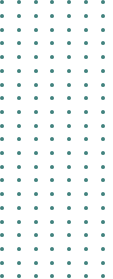EU Strategy for Circular & Sustainable Textiles EUR-Lex – 52022DC0141
In March 2022, the European Union (EU) unveiled its proposal for a Strategy for Circular and Sustainable Textiles (EUR-Lex – 52022DC0141). This strategy is an integral component of the EU’s broader Circular Economy Action Plan, which is pivotal to the EU’s Green Deal agenda.
The scope of the textiles’ strategy encapsulates all textiles sold on the EU market and necessitates the adherence of all EU member states to any legislative mandates stemming from this document.
Environmental impact and the drive towards sustainability
In recognition of the textile industry’s deeply harmful effect on the climate, the EU aims to create a “sustainable ecosystem” (europa.eu) for textiles by 2030. Communication from the EU reveals that European textiles rank fourth in terms of environmental impact among industries in the EU market. The EU aspires to make fast fashion out of fashion, “reverse overproduction and overconsumption” (europa.eu) and create closed-loop recycling systems for textiles.
Fast fashion’s accelerated growth and its implications
The rapid rise of fast fashion has meant that production has doubled between 2000 and 2015 and is projected to double again by 2030. This trajectory, combined with the fact that a substantial portion of textile fibres derive from oil, poses a severe challenge to fossil fuel reserves. The EU’s textile strategy adopts a dual approach to counteract the damaging aspects of the industry: reduce waste by enhancing the durability, reparability, and reusability of textile goods, and foster a closed-loop recycling system, thereby diminishing the sector’s dependency on virgin materials.
Reinforcing supply chains and economic benefits
The EU wishes to fortify the strength of its internal supply chains and economic position. The COVID pandemic revealed the serious implications of relying on supply chains that span several continents. According to publications issued by the EU, “an average of 20 to 35 jobs are created for every 1.000 tonnes of textiles collected for re-use, such as selling them second-hand”. Thus, the EU has identified considerable potential in textile waste.
EUR-Lex – 52022DC0141 core objectives
- Introducing mandatory Ecodesign requirements; this intends to make textiles more durable, repairable, reusable, and recyclable
- A ban on destruction of unsold or returned textiles
- Tackling microplastics pollution
- Introducing information requirements for the consumer, to empower the consumers to make more informed purchasing decisions
- Introducing a Digital Product Passport
- The substantiation of green claims to fight greenwashing
- The implementation of Extended Producer Responsibility (EPR) scheme for textiles
- Boosting reuse and recycling of textile waste
- Mandatory minimums for the inclusion of recycled fibres in textiles
- Ensure textile production takes place with the full respect of social rights
Recent developments and future Insights
Recent advancements highlight the strategy’s traction. As of October 2023, the EU announced amendments to REACH to prohibit the intentional release of microplastics into the environment. Additionally, Digital Product Passports are gaining media attention as an understanding of the EU’s digital strategy to realize a net-zero objective grows in the consumer product industries.
For more in-depth understanding of sustainability regulations and how our suite of sustainability services can facilitate compliance, we invite you to get in touch via the provided link below.
Read more articles from our fourth newsletter
- Sustainability Services Newsletter | Be prepared for the green revolution
- Green Claims Directive
- Endocrine disruptors as a target for legislative action
- EU Chemicals Strategy for Sustainability
- The German supply chain due diligence Act LkSG
- Extended Producer Responsibility (EPR)




